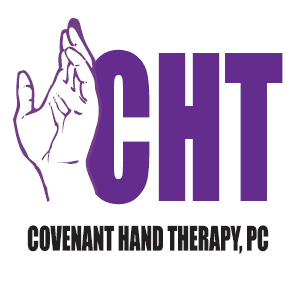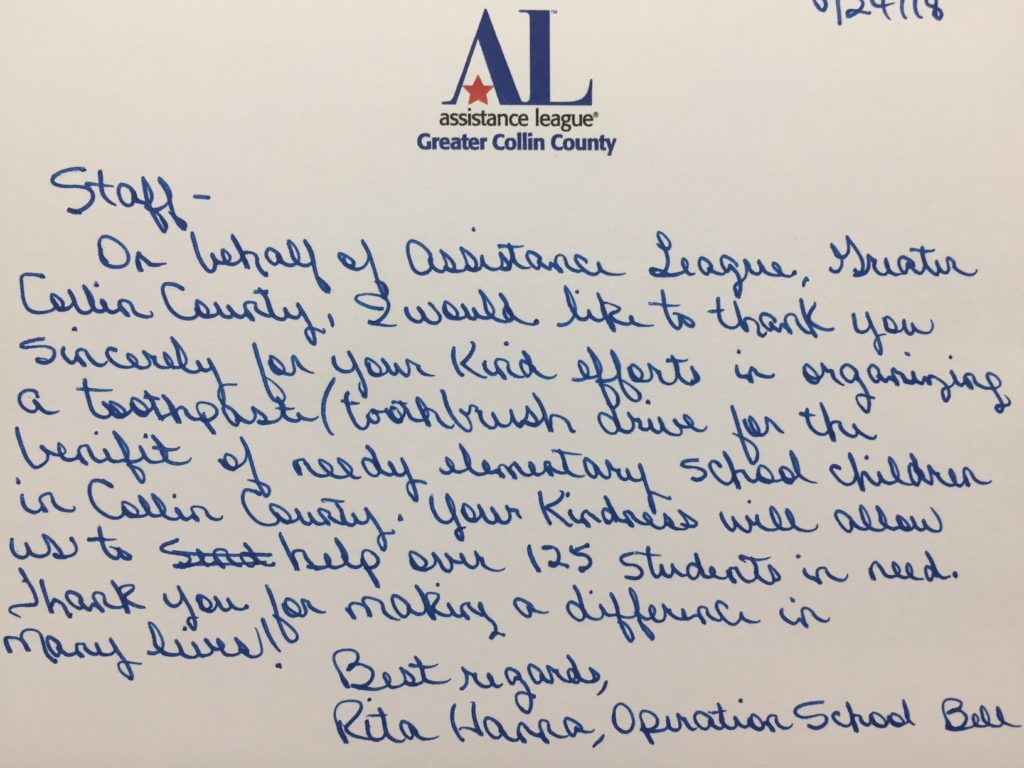June, 2018
CHT’s Summer Community Service Project
Join us in supporting this organization. If you would like more information about them, their website is https://algcc.org. We’ll be collecting items through mid-August.
If it is inconvenient to drop off your items, you may order through Amazon and have your order shipped to our clinic. Thanks for helping with our Summer service project!!
February, 2018
Slow Your Strength Training
“Yes, there is also such a thing as slow strength training, and it’s not some newfangled concept. It’s been around-and researched-for more than three decades. But it’s been gaining buzz, thanks in part to the legions of ex-boot campers and CrossFitters looking for a gentler-on-the-body alternative. (Fact: Nearly three out of four people who do a popular form of high-intensity strength training have injured themselves, according to research in The Journal of Strength and ConditioningResearch.)
The benefits of super-slow toning are pretty remarkable, too. A 2001 study in Journal of Sports Medicine and Physical Fitness, for example, compared a group of people who lifted weights at a regular speed with another that went slo-mo. The two groups did the same exercises for 10 weeks. At the end of the trial, the super-slow lifters had improvements in strength that were 50 percent greater than the improvements the traditional lifters had. “The initial results were so incredible that I did a second study to retest them- because I didn’t believe it!” says lead study author Wayne Westcott, PhD, professor of exercise science at Quincy College.
What makes this training style work so well?”Most people do one second up and one down when they lift weights, ” explains Westcott. “By slowing that process, you increase the amount of time there is tension on the muscle, and you don’t use any momentum to help you lift and lower, both of which make the exercise more effective.”
TRYIT: In Westcott’s studies, participants lifted for 10 seconds and lowered for four- which can feel like a toning eternity. But, he says, you can get similar results by using an easier-to-remember method, 5-5-5: Go up for five seconds and down for five seconds using a weight with which you can do only 5 reps. You can do several sets of the same move (with other moves interspersed), or you can mix it up and do just five reps of lots of moves. A 30 minute session twice a week should do the trick. “Research shows that it takes your body three days to recover between strength sessions,” saysWestcott. It’s during that time that your muscles get stronger and more defined, so adding more workouts will only break you
down, not tone you up.”
(Resources cited from Westcott, 2001 Journal of Sports Medicine and Physical Fitness)
November 15, 2017
CHT’s Winter Community Service Project
For our clinic’s current community service project, help CHT bring the Magic of Santa to Victims of Domestic Violence by collecting gifts for Safe Haven Shelter of Tarrant County. Santa’s Sack donations allow moms and children staying at Safe Haven shelters to select special gifts for each other at their Christmas store (at no cost). Gifts are then carefully wrapped by their elves and delivered by Santa on Christmas morning, bringing the joy of the holidays to victims who often leave everything to find safety.
PLEASE DONATE NEW
- Toys (all ages)
- Gift cards (all types)
- Books
- Electronics
- Games
- Puzzles
- Purses
- Scarves
We are collecting items until December 13th . Thanks for sharing with us.
12/29/17 THANKS for contributing to our Winter Community Service Project and making it a success!! Have a healthy new year!
September 19, 2017
Animal Bites
“There are as many as three million animal bites in the United States each year. Dogs are responsible for most animal bites in this country (up to 90%), with cat bites accounting for about 5% of such injuries.
Other biting animals include rodents (at least 2%), rabbits, ferrets, farm animals, monkeys, and reptiles. Animal bites to the hand most frequently occur on the fingers of the dominant hand of children between the ages of 5 and 14. Women are bitten more frequently by cats, and men by dogs. Infections occur more frequently in cat bites because cats have extremely sharp, pointed teeth that can cause deep puncture wounds. The skin usually flaps over the bite, thereby sealing off the puncture wound, precluding open drainage and allowing an infection to develop.
The major concern of all bite wounds is subsequent infection. In the United States, about 1% of dog bites and 6% of cat bites require hospitalization. With swift and proper care, the prognosis is usually very good for recovery from these injuries. Your doctor will examine the wound and ask about contributing factors to the injury . It is crucial to update your tetanus status if you have not had a booster shot within the past ten years. X-rays may be used to identify any damage to the bones and joints or tooth fragments that may have broken off. If an infected bite to the hand goes untreated for too long, x-rays may reveal evidence of osteomyelitis, or the spread of infection to the bone.”
(Source: American Society for Surgery of the Hand, 2017)
August 9, 2017
Good Skin Care
“Good skin care requires cleansing and moisturizing. Cleansing is essential to remove dirt and dead skin cells. It helps to prevent pimples or acne. Cleansing, however, can dry out the skin. Cleansing removes the oil on the skin, which retains moisture. As a result moisturizers are needed to restore water to the skin and protect the skin. Special liquid cleaners are recommended over using traditional bar soap. Liquid cleansers can be made with moisturizer to combat the drying agents in the cleansers. The type of cleaner chosen depends on the skin type of the person using it. Vitamin E is often included in good skin care products as it helps moisturize the skin. It also maintains elasticity. The type of moisturizer used is important as well. A heavier moisturizer should be used at night while a thinner, lighter moisturizer is recommended for daytime use.”
“Good skin care requires a lot of effort. A regime of cleaning and moisturizing should be followed everyday in order to be effective. Avoiding exposure to the sun and tanning is ideal to prevent the harmful effects of radiation. Application of sunscreen with a minimum SPF of 15 is helpful as well. Smoking should be avoided. A healthy diet is beneficial in improving the elasticity of the skin. Drinking water is essential to good skin care. Water helps the body function better. It also cleans the pores from the inside. It re-hydrates the skin, which helps the skin stay moist. Keeping good habits in addition to good skin care will help the skin age gracefully and beautifully.”
(Source: Associates in Dermatology, 2011)
June 15, 2017
CHT’s Summer Community Service Project
Each year our clinic participates in several community service projects. For our project this summer, Covenant Hand Therapy is collecting items to donate to the Frisco Family Services Food Pantry. “This vital resource allows Frisco ISD and surrounding communities to use their financial resources on other expenses during their time of crisis.” (FFS, 2017) If you would like to participate, please bring items to drop in a box located at the front office. We will be collecting items until June 30th, 2017.
Frisco Family Services Food Pantry Most Needed Items
Shelf-stable foods
- Condiments: ketchup, mayonnaise, jelly, etc.
- Salad dressing
- Cooking oil
- Sugar
- Plain, unsweetened oatmeal
- Cereal
- Syrup
- Juice boxes
- Snack items
- Breakfast bars
Personal Care Items
- Soap
- Shampoo
- Conditioner
- Toothpaste
- Hygiene items
For Babies
- Pull ups
- Diapers sizes 4 and 5
- Baby wipes
For Pets
- Dog food – 3-6 oz. can or 4-12 lb. bag
- Cat food – 3-6 oz. can or 4-12 lb. bag
Other Items – Needed in Smaller Containers
- Laundry detergent
- Dishwashing liquid
- Household
- Cleaners and disinfectants
- Toilet bowl cleaner
June 14, 2017
‘Avocado Hand’…It’s the Pits!
Not only are the prices of avocados increasing, but injuries occurring while slicing an avocado are on the rise. The British Association of Plastic Reconstructive and Aesthetic Surgeons wants to warn others about the safety risks costing many people a trip to the emergency room. ‘Avocado hand’ occurs when a person cuts an avocado using a knife improperly and accidentally slices his/her hand with the knife. Injuries that are commonly seen include a multitude of slash and/or stab wounds that can lead to serious nerve and tendon injuries, requiring intricate surgery. Following surgery, rehabilitation of a tendon or nerve repair requires strict guidelines to follow in order to protect the surgical procedure.
Hand Therapists are specialized to rehabilitate the affected hand following surgery through the use of custom splinting, wound and scar care, modalities, edema control, education of precautions, modification of activities of daily living, and advancement of movement based upon the weeks since surgery. To avoid a trip to the ER while preparing a mean bowl of guacamole for your friends, educate yourself on how to properly cut an avocado (Source: CBS, 2017)
Want to know the proper way to cut an avocado? Watch the video below!
May 3, 2017
CLT Puts the “Fun” in “Functional”
With disease, injury, or trauma swelling may progress into lymphedema impairing mobility as the affected areas increase in girth. Joint movement may become restricted and painful, as the skin over the involved areas becomes taut and dry. The underlying tissues can become hard and fibrotic which impairs the flow of blood and oxygen to the area. This unhealthy state often leads to recurrent infections as excess lymph fluid is a good growth media for bacteria and fungi.
Whatever the cause, Certified Lymphedema Therapists (CLT) at Covenant Hand Therapy have helped our patients return to the joy of work and play in the activities they enjoy like tennis, golfing, bowling, fishing, skiing, boating, baseball, basketball, football, cycling, sewing, glass cutting, piano, guitar, cooking, wood working, driving … you name it. Our occupational therapists keep your goals in mind when developing your specific treatment regimen.
May 1, 2017
Opioid Epidemic: #ChooseOT/PT
“Opioid prescriptions have quadrupled since 1999. In 2012, health care providers wrote 259 million opioid prescriptions, enough for every adult in the United States to have a bottle of pills. As the volume of opioids has increased, so has the amount of misuse, abuse, and overdose.” (CDC, 2016)
Occupational Therapy and Physical Therapy are both safe and effective alternatives to opioids for long-term pain management and prevention. In March 2016, the Centers for Disease Control and Prevention (CDC) released guidelines urging clinicians to consider opioid therapy “only if expected benefits for both pain and function are anticipated to outweigh the risks to the patient.”
- At CHT, we offer a variety of pain management treatments:
-
-
- Modalities: heat/cold packs, paraffin wax, ultrasound, phototherapy, cold light laser, iontophoresis, TENS and IFC
- Manual massage, splinting, kinesiotaping, therapeutic activities
- Body mechanics training, energy conservation techniques, and ADL/IADL retraining
-
February 10, 2017
Deep Breathing Aides in Lymphatic Flow
Unlike the heart in the blood circulatory system, the lymphatic system does not have an active pump to propel lymphatic fluid back to the bloodstream. Effective lymph flow depends on sufficient muscle and joint activity, especially if the functionality of the lymphatic system is compromised by disease, trauma, or surgery.
Abdominal (diaphragmatic) breathing exercises are a valuable tool in stimulating deep lymphatic structures and some organ systems. Stimulation of these deep lymphatic structures, particularly the deep thoracic duct, which is the largest lymph vessel in the body, accelerates the transport of lymph fluid toward the venous system. The considerable decongestive effects on the lymphatic and venous systems make abdominal breathing exercises good for our general well-being.
Assume a position of comfort, lying on your back, with your legs straight out or knees slightly bent, with or without a pillow under your head and/or knees, or semi reclined in a chair. Having your hips bent less than 90 degrees is optimal.
To perform deep breathing:
- Place both hands on your abdomen keeping your wrist and fingers flat (do not “poke” into your belly)
- Inhale. Smell the roses (to a 2 count) deeply through your nose deep and low into the diaphragm (feel your breath raise your lower belly against your hands)
- Exhale slowly through pursed lips to a 4 count.
- Perform 3-5 repetitions / 3-4 times per day or as often as possible
Don’t wait to feel stress or fatigue before minding your breathing. The lymphatic system works best with a good balance of nutrition, exercise, and deep breathing. Other benefits of deep breathing include lowered blood pressure, increasing feelings of calm and relaxation, and distressing.
Disclaimer: Abdominal breathing exercise should never cause dizziness, pain or discomfort. Please consult with your physician especially if you experiencing pain with deep breathing.
Sources:
http://www.lymphedemablog.com/ by Joachim E. Zuther
Book: Lymphedema Management by Joachim E. Zuther


